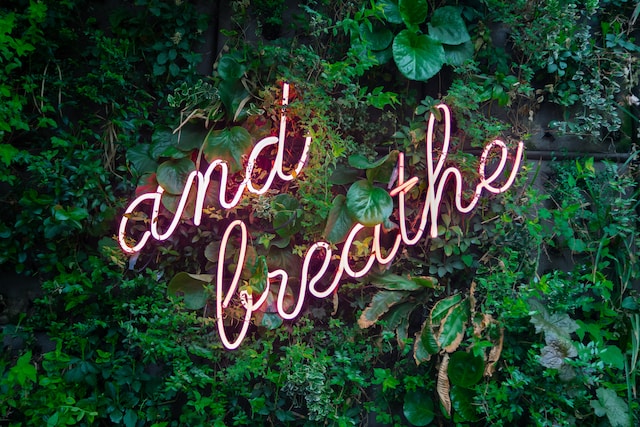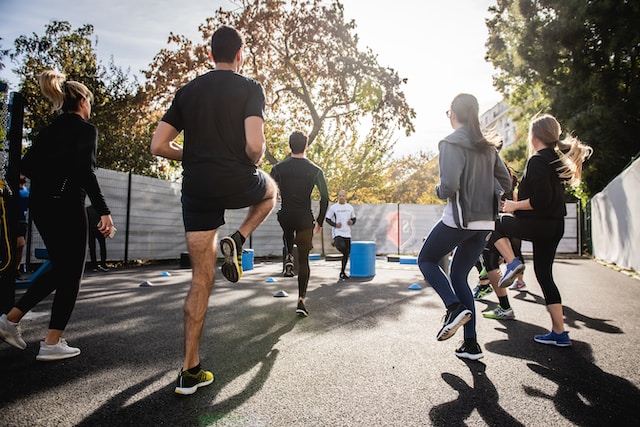Anxiety disorders can be distressing and debilitating.
They may contribute to loss of educational and employment opportunities and difficulties in family and social relationships.
Recovery is possible with appropriate treatment such as exposure therapy, attention training, and a range of anxiety management techniques that can help you manage your symptoms. You can learn the following strategies yourself (using books or taking courses, for example) or you can consult with a trained professional.
Managing anxiety
Some of the management options for anxiety disorders include:
- learning about anxiety
- mindfulness
- relaxation techniques
- correct breathing techniques
- cognitive therapy
- behavior therapy
- counseling
- dietary adjustments
- exercise
- learning to be assertive
- building self-esteem
- structured problem solving
- support groups

Knowledge is power
Learning about anxiety
The old adage ‘knowledge is power’ applies here – learning all about anxiety is central to recovery. For example, education includes examining the physiology of the ‘flight-or-fight’ response, which is the body’s way to deal with impending danger. For people with anxiety disorders, this response is inappropriately triggered by situations that are generally harmless. Education is an important way to promote control over symptoms.
Mindfulness
When feeling anxious, a person can spend a significant amount of time caught up in anxiety-provoking thoughts. Mindfulness guides us to bring our attention back to the present moment and unhook from thoughts that may be unhelpful.
Anxiety treatment Marin County California
It is important to find the right therapist and I know the search can feel overwhelming. You can begin to get a sense of the work I do by exploring my website and I encourage you to contact me to set up a free 30 minute phone consultation which allows you to get a sense of whether we are a good match and I will better understand your needs and what you are hoping to get out of therapy.
I am an anxiety therapist in Marin County California offering video appointments and can work with clients anywhere in California. My practice is centered in the San Francisco Bay Area and I also specialize in Anxiety therapy Marin County California.
Talia Korenbrot, LMFT (licensed marriage and family therapist) – (415) 294-5340
Mindfulness is becoming more and more popular as people start to realize how beneficial it is for a number of issues. There are many resources available to support you to develop a mindfulness practice.
Relaxation techniques
A person who feels anxious most of the time has trouble relaxing, but knowing how to release muscle tension can be a helpful strategy. Relaxation techniques include:
- progressive muscle relaxation
- abdominal breathing
- isometric relaxation exercises

Breathing techniques are helpful
Correct breathing techniques
The physical symptoms of anxiety may be triggered by hyperventilation, which raises oxygen levels and reduces the amount of carbon dioxide in the blood. Carbon dioxide assists in the regulation of the body’s reaction to anxiety and panic.
It can be helpful for a person who suffers from anxiety to learn how to breathe from their diaphragm, rather than their chest, to safeguard against hyperventilation. The key is allowing your belly to expand as you breathe in.
You can make sure you are breathing correctly by placing one hand on your lower abdomen and the other on your chest. Correct breathing means your abdomen moves, rather than your chest. It also helps to slow your breathing while feeling anxious.
Some people can find abdominal breathing challenging. There are many other breathing techniques that you can try. You can also try to hold your breath for a few seconds. This helps to boost carbon dioxide levels in the blood.
Cognitive therapy
Cognitive therapy focuses on changing patterns of thinking and beliefs that are associated with, and trigger, anxiety. For example, a person with a social phobia may make their anxiety worse by negative thoughts such as, ‘Everyone thinks I’m boring’.
The basis of cognitive therapy is that beliefs trigger thoughts, which then trigger feelings and produce behaviors. For example, let’s say you believe (perhaps unconsciously) that you must be liked by everyone in order to feel worthwhile. If someone turns away from you in mid-conversation, you may think, ‘This person hates me’, which makes you feel anxious.
Cognitive therapy strategies include rational ‘self-talk’, reality testing, attention training, cognitive challenging and cognitive restructuring. This includes monitoring your self-talk, challenging unhelpful fears and beliefs, and testing out the reality of negative thoughts.
Behavior therapy
A major component of behavior therapy is exposure. Exposure therapy involves deliberately confronting your fears in order to desensitize yourself. Exposure allows you to train yourself to redefine the danger or fear aspect of the situation or trigger.
The steps of exposure therapy may include:
Rank your fears in order, from most to least threatening.
Choose to work first on one of your least threatening fears.
Think about the feared situation. Imagine yourself experiencing the situation. Analyze your fears -– what are you afraid of?
Work out a plan that includes a number of small steps – for example, gradually decrease the distance between yourself and the feared situation or object, or gradually increase the amount of time spent in the feared situation.
Resist the urge to leave. Use relaxation, breathing techniques and coping statements to help manage your anxiety.
Afterwards, appreciate that nothing bad happened.
Repeat the exposure as often as you can to build confidence that you can cope.
When you are ready, tackle another feared situation in the same step-by-step manner.

Dietary adjustments can help
Dietary adjustments
The mineral magnesium helps muscle tissue to relax, and a magnesium deficiency can contribute to anxiety, depression and insomnia. Inadequate intake of vitamin B and calcium can also exacerbate anxiety symptoms. Make sure your daily diet includes foods such as wholegrain cereals, leafy green vegetables and low-fat dairy products.
Nicotine, caffeine and stimulant drugs (such as those that contain caffeine) trigger your adrenal glands to release adrenaline, which is one of the main stress chemicals. These are best avoided. Other foods to avoid include salt and artificial additives, such as preservatives. Choose fresh, unprocessed foods whenever possible.

Exercise
Exercise
The physical symptoms of anxiety are caused by the ‘flight-or-fight’ response, which floods the body with adrenaline and other stress chemicals. Exercise burns up stress chemicals and promotes relaxation. Physical activity is another helpful way to manage anxiety. Aim to do some physical activity at least three to four times every week, and vary your activities to avoid boredom.
Learning to be assertive
Being assertive means communicating your needs, wants, feelings, beliefs and opinions to others in a direct and honest manner without intentionally hurting anyone’s feelings. A person with an anxiety disorder may have trouble being assertive because they are afraid of conflict or believe they have no right to speak up. However, relating passively to others lowers self-confidence and reinforces anxiety. Learning to behave assertively is central to developing a stronger self-esteem.
Building self-esteem
People with anxiety disorder often have low self-esteem. Feeling worthless can make the anxiety worse in many ways. It can trigger a passive style of interacting with others and foster a fear of being judged harshly. Low self-esteem may also be related to the impact of the anxiety disorder on your life. These problems may include:
- isolation
- feelings of shame and guilt
- depressed mood
- difficulties in functioning at school, work or in social situations
The good news is you can take steps to learn about and improve your self-esteem. Community support organizations and counseling may help you to cope with these problems.
Structured problem solving
Some people with anxiety disorders are ‘worriers’, who fret about a problem rather than actively solve it. Learning how to break down a problem into its various components – and then decide on a course of action – is a valuable skill that can help manage generalized anxiety and depression. This is known as structured problem solving.
Medication
It is important that medications are seen as a short-term measure, rather than the solution to anxiety disorders.
Research studies have shown that psychological therapies, such as cognitive behavior therapy, are much more effective than medications in managing anxiety disorders in the long term.

Support groups and education
Support groups and education
Support groups allow people with anxiety to meet in comfort and safety, and give and receive support. They also provide the opportunity to learn more about anxiety and to develop social networks.
https://www.betterhealth.vic.gov.au/health/conditionsandtreatments/anxiety-treatment-options
Photos: Unsplash